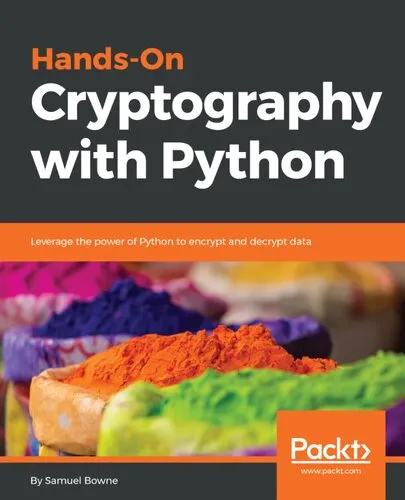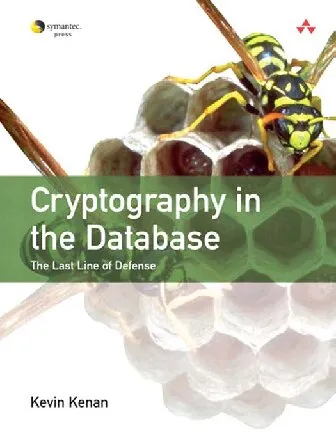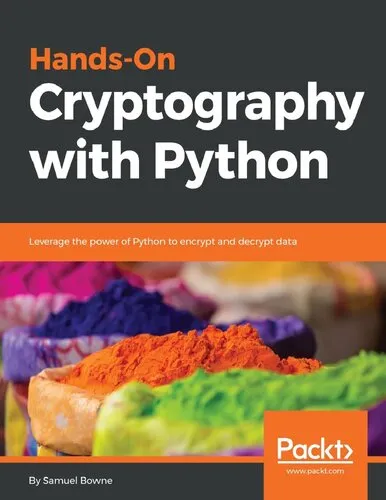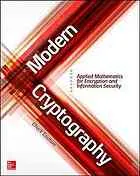Hands-On Cryptography with Python: Leverage the power of Python to encrypt and decrypt data
4.4
Reviews from our users

You Can Ask your questions from this book's AI after Login
Each download or ask from book AI costs 2 points. To earn more free points, please visit the Points Guide Page and complete some valuable actions.Related Refrences:
Introduction
Cryptography has rapidly become one of the most critical aspects of modern technology. As our reliance on digital systems grows, ensuring the security and integrity of our data is paramount. Hands-On Cryptography with Python: Leverage the power of Python to encrypt and decrypt data is a hands-on guide designed for anyone eager to understand and implement cryptographic techniques using Python. Whether you are a beginner who wants to learn about encryption or an experienced developer seeking a practical approach to securing software systems, this book provides the essential knowledge and tools to get you started.
The book dives deep into core cryptographic concepts while equipping readers with Python-based tools and examples to solve real-world problems. Unlike purely theoretical texts, this book emphasizes actionable, practical knowledge with code-driven examples and projects that showcase how cryptography operates in real applications.
Detailed Summary of the Book
The book begins with foundational explanations of cryptographic principles, such as confidentiality, integrity, and authentication. These principles are the cornerstone of securing information in computing systems. The text then explains the evolution of cryptography, from classical ciphers used by ancient civilizations to modern algorithms like RSA, AES, and Elliptic Curve Cryptography (ECC).
Readers will gain hands-on experience by writing Python programs for tasks such as implementing encryption algorithms, generating secure keys, hashing data, and verifying digital signatures. The book covers libraries like cryptography, PyCryptodome, and Python's built-in hashlib, ensuring practicality and ease of access. Beyond basic encryption, chapters also explore advanced topics, including secure communication protocols, key management, and methods for attacking weak encryption.
Throughout the book, theoretical concepts are supported by Python code that's easy to follow. This structure allows readers to not just understand the principles of encryption and decryption but also apply them in building secure software systems. Crucially, the book highlights common mistakes and vulnerabilities so readers can avoid pitfalls when implementing cryptography in the real world.
Key Takeaways
- Understand essential cryptography principles, including encryption, hashing, and key exchange protocols.
- Gain proficiency in Python libraries like
cryptographyandPyCryptodometo implement cryptographic solutions. - Understand the differences between symmetric and asymmetric cryptography, and when to use each type.
- Learn about hashing algorithms and how they ensure data integrity.
- Develop practical skills to secure communications with techniques like TLS/SSL and digital signatures.
- Understand how cryptographic vulnerabilities arise and how to avoid them.
Famous Quotes from the Book
"Security by obscurity is not security. Real security lies in understanding your tools and using proven cryptographic methods."
"Cryptography is not just about keeping secrets—it's about enabling trust in an untrusted world."
"A simple mistake in implementation can render even the most advanced cryptographic algorithm ineffective. Test, verify, and test again."
Why This Book Matters
In today's interconnected world, data security is no longer optional—it's a necessity for both individuals and organizations. However, implementing cryptography in an effective and practical manner remains a challenge for many developers. This book addresses that challenge by bridging the gap between theoretical cryptographic concepts and their real-world applications in software systems.
By focusing on Python, one of the most accessible and widely-used programming languages, the book ensures that even those without advanced programming expertise can gain a strong foothold in cryptography. It equips readers with the ability not just to use cryptographic functions, but to understand their inner workings, limitations, and proper applications. This knowledge is essential for developing secure systems and protecting sensitive data from ever-evolving cyber threats.
This book matters because it empowers its readers to take control of security in their projects, giving them the skills to design, implement, and maintain systems that can withstand potential vulnerabilities. In doing so, it contributes to building a more secure digital world—one Python program at a time.
Free Direct Download
You Can Download this book after Login
Accessing books through legal platforms and public libraries not only supports the rights of authors and publishers but also contributes to the sustainability of reading culture. Before downloading, please take a moment to consider these options.
Find this book on other platforms:
WorldCat helps you find books in libraries worldwide.
See ratings, reviews, and discussions on Goodreads.
Find and buy rare or used books on AbeBooks.
1484
بازدید4.4
امتیاز0
نظر98%
رضایتReviews:
4.4
Based on 0 users review
Questions & Answers
Ask questions about this book or help others by answering
No questions yet. Be the first to ask!














